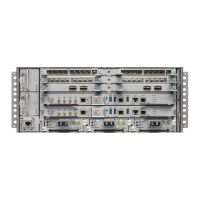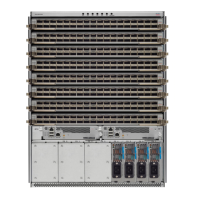6. Repeat Step 5 for each interface that uses OSPF.
7. log adjacency changes [ detail ] [ enable | disable ]
8. commit
DETAILED STEPS
PurposeCommand or Action
configure
Step 1
Enables OSPF routing for the specified routing process and
places the router in router configuration mode.
Do one of the following:
Step 2
• router ospf process-name
or
• router ospfv3 process-name
Enables OSPFv3 routing for the specified routing process
and places the router in router ospfv3 configuration mode.
Example:
RP/0/RP0/CPU0:router(config)# router ospf 1
The process-name argument is any
alphanumeric string no longer than 40 characters.
Note
or
RP/0/RP0/CPU0:router(config)# router ospfv3 1
Configures a router ID for the OSPF process.
router-id { router-id }
Step 3
Example:
We recommend using a stable IP address as the
router ID.
Note
RP/0/RP0/CPU0:router(config-ospf)# router-id
192.168.4.3
Enters area configuration mode and configures an area for
the OSPF process.
area area-id
Example:
Step 4
• Backbone areas have an area ID of 0.
RP/0/RP0/CPU0:router(config-ospf)# area 0
• Nonbackbone areas have a nonzero area ID.
• The area-id argument can be entered in
dotted-decimal or IPv4 address notation, such as area
1000 or area 0.0.3.232. However, you must choose
one form or the other for an area. We recommend using
the IPv4 address notation.
Enters interface configuration mode and associates one or
more interfaces for the area configured in Step 4.
interface type interface-path-id
Example:
Step 5
RP/0/RP0/CPU0:router(config-ospf-ar)# interface
GigabitEthernet 0/1/0/3
—Repeat Step 5 for each interface that uses OSPF.
Step 6
(Optional) Requests notification of neighbor changes.log adjacency changes [ detail ] [ enable | disable ]
Step 7
Example:
• By default, this feature is enabled.
Routing Configuration Guide for Cisco NCS 6000 Series Routers, IOS XR Release 6.4.x
281
Implementing OSPF
Enabling OSPF
